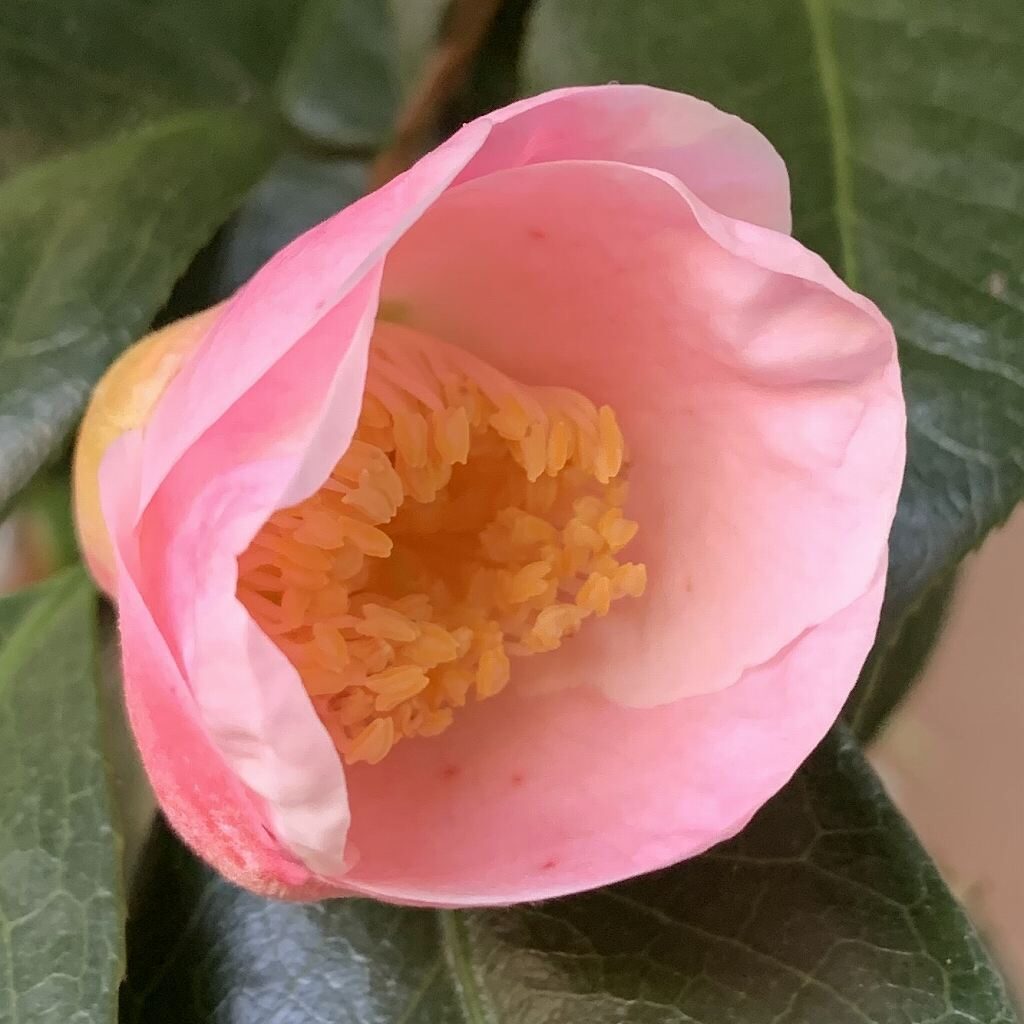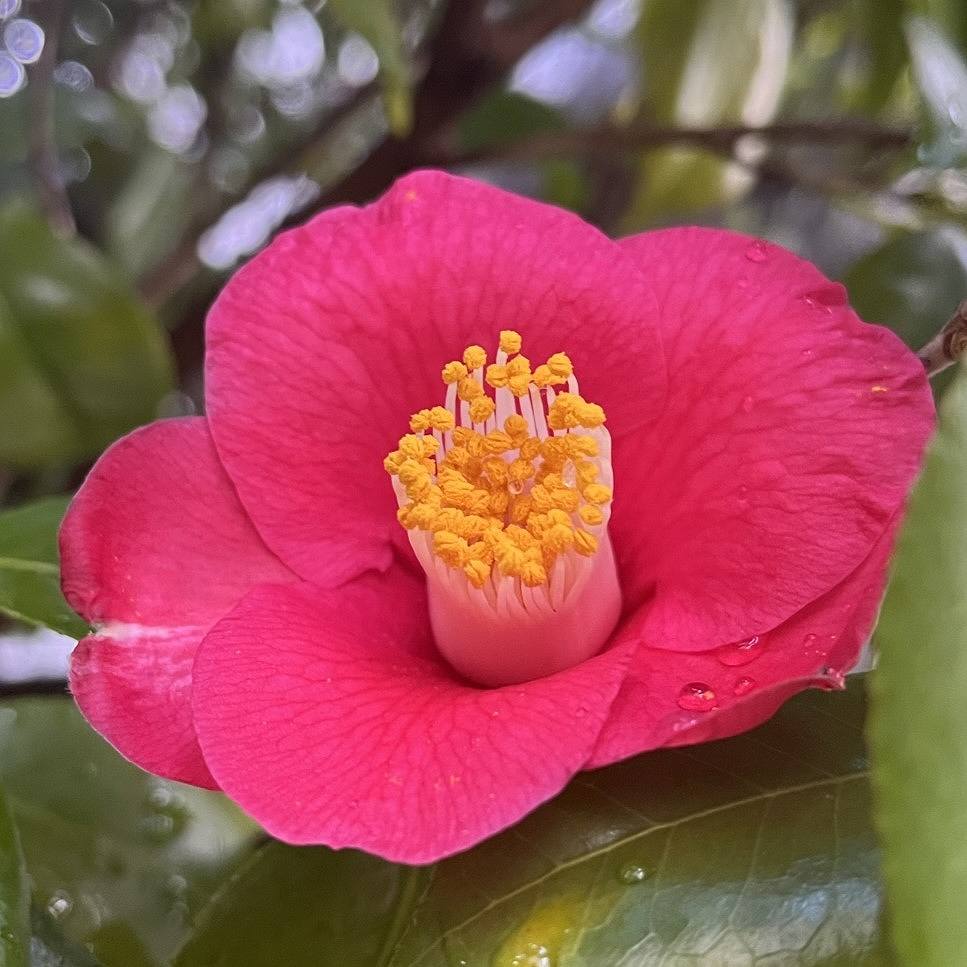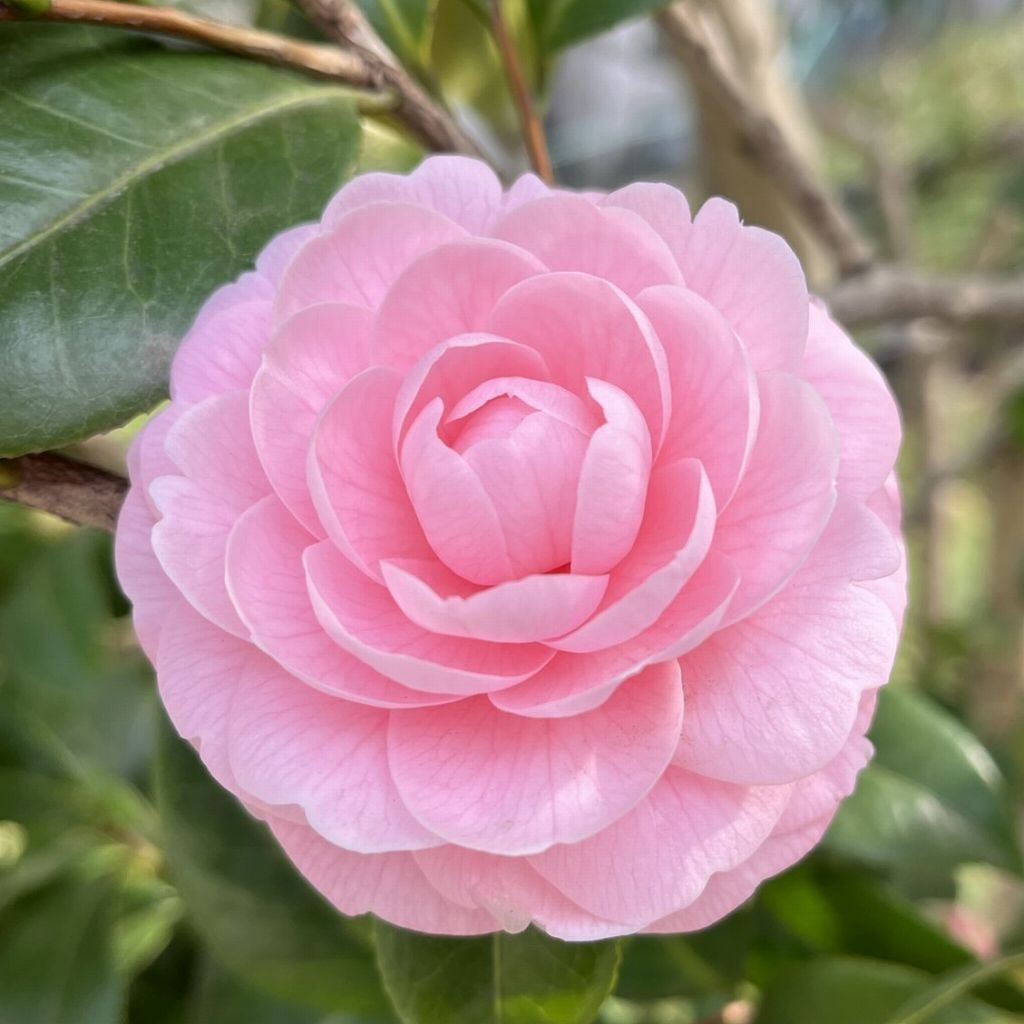ツバキは江戸時代に栽培が広がり、一重咲きの自生種から八重咲きの園芸種まで、品種が多様化。欧州では「日本の薔薇」とも呼ばれました。
Camellia came to be widely cultivated in the Edo period, and the varieties diversified from wild single-flowered varieties to double-flowered cultivars. In Europe, it was called “Rose of Japan”.
【仮名】ツバキ, ヤブツバキ
【和名】椿, 藪椿
【英名】Camellia, Common Camellia
【学名】Camellia japonica
【誕生】02/ 03, 02/ 04, 12/ 10
【開花】01, 02, 03, 04, 09, 10, 11, 12月
【花色】White, Pink, Red






ツバキ
ツバキの来歴
ツバキはツバキ科ツバキ属の常緑樹。日本では北海道から沖縄まで、国外では朝鮮半島、中国、台湾に分布しています。江戸時代に茶花として栽培が広がり、一重咲きの自生種「藪椿」から八重咲きの園芸種「乙女椿」まで、品種が多様化。欧州では「日本の薔薇」とも呼ばれました。
ツバキの葉
ツバキの名前は葉に由来します。光沢があるので「艶葉木」、厚みがあるので「厚葉木」、寒さに耐えるので「強葉木」。葉は互生し、長楕円形で先端が尖り、縁に細かな鋸歯が入ります。ラテン語の属名は18世紀、種子を欧州に持ち帰った宣教師ゲオルク・ヨーゼフ・カメルに由来。
ツバキの花
ツバキの花は花被片が5枚。花柱の周りに花糸が密生します。花が咲くときは、山茶花や茶の木のように開ききらず、花冠が筒状のまま。花が散るときは、花弁と花糸が合着しているので、花首ごと落ちます。花筒の底は花蜜がたっぷり。ヒヨドリやメジロを引き寄せて送受粉します。
ツバキの実
ツバキは花後の蒴果が熟すと3つに裂開。黒褐色の種子から椿油が採れます。椿油はオレイン酸、パルミチン酸、ステアリン酸、カメリン、カメリアサポニンなどを含み、昔から調理や整髪、育毛などに利用。椿油で髪を洗うと汚れが落ち、頭皮の湿疹、かぶれにもよいとされました。
ツバキの近縁
ツバキの近縁「山茶花」は花が早く、「春山茶花」は遅く、「夏椿」は夏に咲きます。「寒椿」は山茶花との交配種。「雪椿」は本州中北部の日本海側、「屋久島椿」は南西諸島に分布します。茶花の「侘助」は可憐な一重咲き。「茶の木」は白色、「金花茶」は黄色の花が咲きます。
Camellia
Camellia is an evergreen tree belonging to Theaceae family. In Japan, it is distributed from Hokkaido to Okinawa, and overseas, it is distributed in the Korean Peninsula, China, and Taiwan. Cultivation as a tea flower spread during the Edo period, and the varieties diversified from the single-flowered wild “Yabu-tsubaki” to the double-flowered garden variety “Otome-tsubaki”. In Europe, it was called “Rose of Japan”.
In the past, the Japanese name of Camellia had various meanings associated with the leaves. Glossy-leaved trees, thick-leaved trees, and hardy-leaved trees. The leaves are alternate, elliptical with pointed tips and finely toothed margins. The Latin genus name comes from the 18th-century missionary Georg Joseph Kamel, who brought the seeds back to Europe.
A camellia flower has five tepals. Filaments grow densely around the style. When the flower blooms, it does not fully open like sasanqua or tea trees, and the corolla remains cylindrical. When the flower scatters, the petals and filaments are fused together, so the whole flower falls off. The bottom of the flower tube is full of nectar. It attracts bulbuls and white-eyes for pollination.
Camellia forms a capsule that splits into three when ripe. Camellia oil is obtained from the dark brown seeds. Camellia oil contains oleic acid, palmitic acid, stearic acid, camelin, camellia saponin, etc., and has been used for cooking, hair styling, and hair growth since ancient times. Washing your hair with camellia oil removed dirt and was said to be good for eczema and rashes on the scalp.
A close relative of camellia, “Sasanqua” blooms early, “Haru-sasanqua” blooms late, and “Natsu-tsubaki” blooms in summer. “Kan-tsubaki” is a hybrid of Camellia and Sasanqua. “Yuki-tsubaki” is distributed in the Japan Sea side of central and northern Honshu, and “Yakushima-tsubaki” is distributed in the Nansei Islands. “Wabisuke” used in the tea ceremony has a lovely single flower. “Tea tree” has white flowers, and “Golden flower tea” has yellow flowers.


